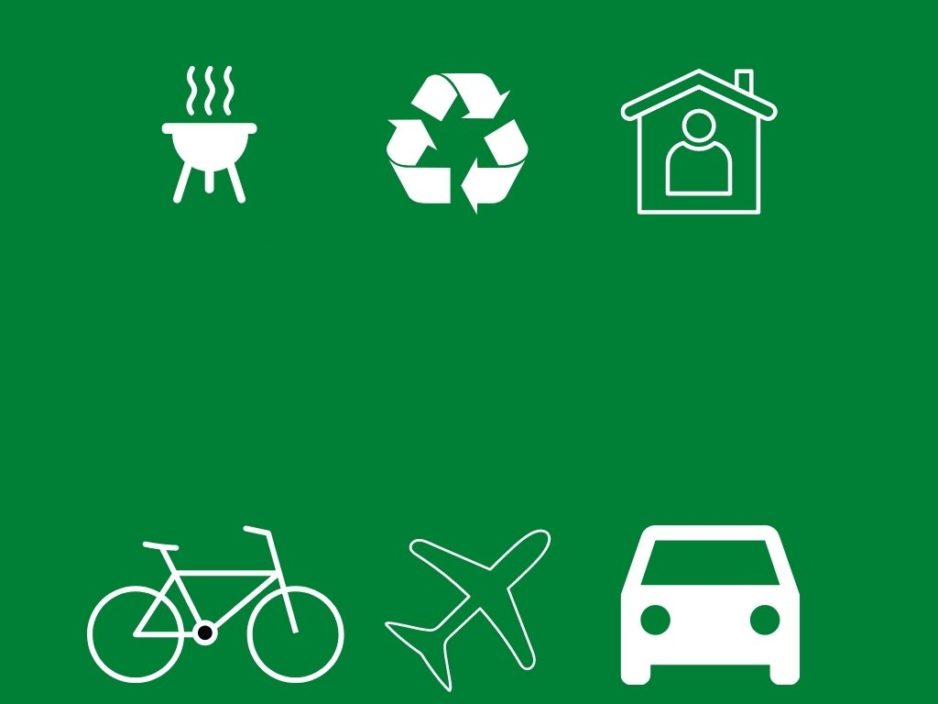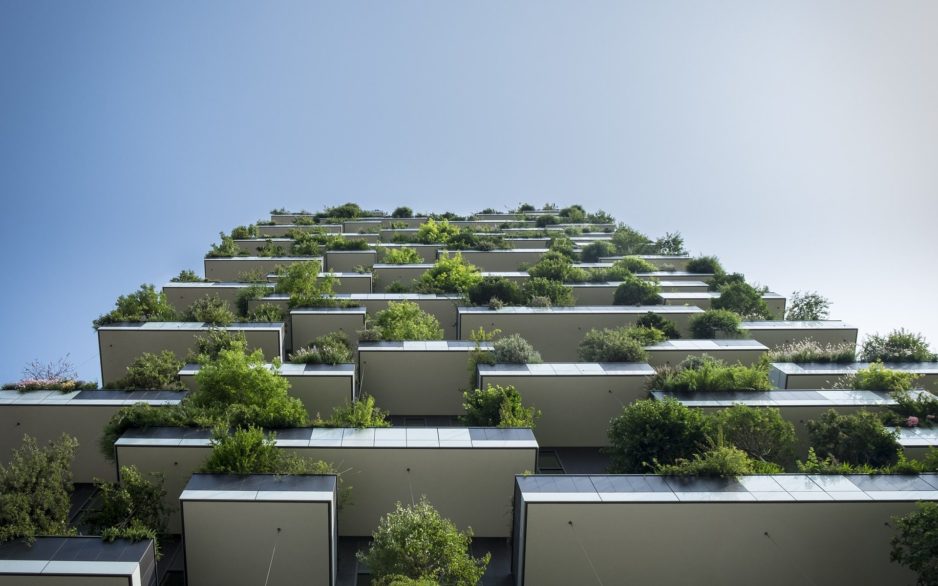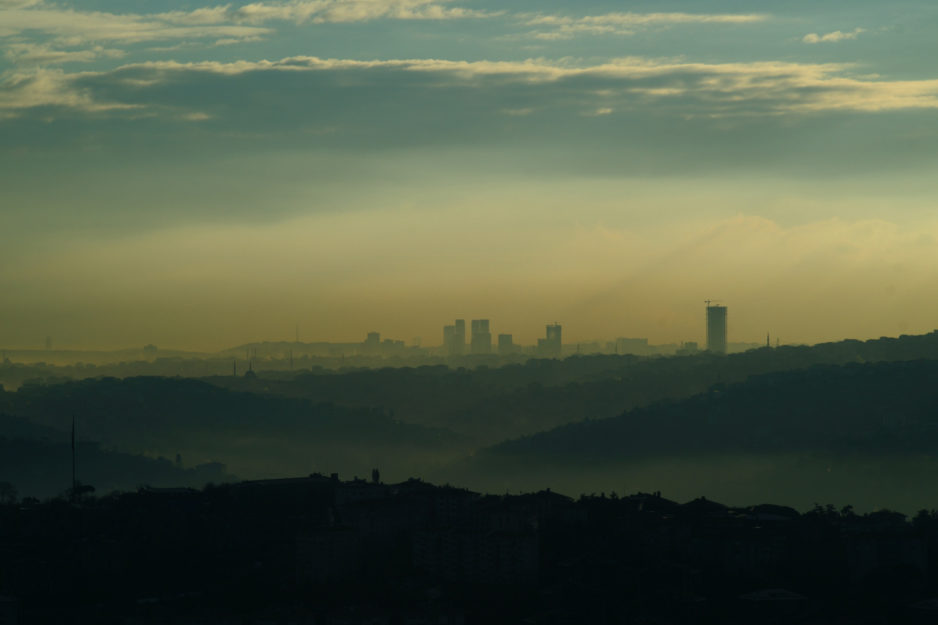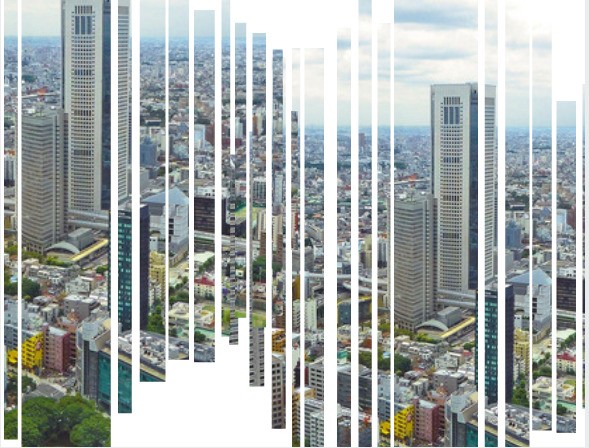


Category: More news
Thoughts for clean air on in our offices
Crazy for a cruise holiday? Let’s talk air quality
A cruise is one of the most sought-after holiday destinations. The Caribbean, Mediterranean, Alaska, northern Europe and some areas in Asia have the largest array of Cruises with lavish restaurants and what seems like a relaxing holiday in the middle of nature but with all the conveniences of a touristy city on board. Worldwide a total of 24.2 million passengers enjoy cruises every year.
Unfortunately for cruise holiday goers, reports conducted by journalists in France and in the UK have shown that fine particulate matter (known as PM2.5 and PM 10) is particularly high on these cruise destinations.
Cruise ships are important sources of air pollution impacting the routes they cover and the cities in which they dock. One cruise ship emits the same amount of carbon dioxide as one million cars per day. We might think that this is only the trail left by the cruise, but in fact it affects also the people on the cruise. Journalists measured the air quality on the main deck and found that the concentration of fine particles was twice as high as the concentration in London’s Picadilly Circus and similar to the measurements in New Delhi, all coming from the same ship’s funnels.



Why?
Cruises use residual fuel of very low quality, it’s the fuel left after the refined fuel for cars has been extracted. But it’s cheap and maritime global regulation is limited and difficult to enforce. Nonetheless, the International Maritime Organization has fixed the 1st January 2020 as the date for all passenger ships to use fuel with maximum 0.5% lead content, it is now 3 times that level at 1.5%.
All cruise goers and communities living in the ports where these cruise ships dock have the right to know what they breathe. More regulation is essential, but constant monitoring on-board and off-board is essential to reassure users and communities of the air quality they are exposed to.
Meo’s air quality monitor- measures PM2.5 and PM10.
Let’s measure and take control of the air we breathe!
Sources:
Independent – Air quality on cruise ship deck ‘worse than world’s most polluted cities’, investigation finds
LaProvence – Le souffle pollué des géants des mers en Méditerranée
Architecture and Air Pollution
Architecture can have a positive or negative impact on a building’s energy efficiency. But can it effectively improve air quality?
China started recently the construction of Liuzhou Forest City, which is expected to be a satellite neighborhood completed by 2020 connected to the main city by rail. It is a wild reminder of the importance of architecture in controlling air quality in our living environments. This city is specifically designed to fight air pollution by extensive use of vegetation throughout the building façade. The design by Stefano Boeri Architetti follows the experience of their two buildings inaugurated in Milan 2014: Bosco Verticale. In China, 1 million plants and 40,000 trees planted all over the project will absorb 1,000 tons of carbon dioxide and 57 tons of other pollutants per year.
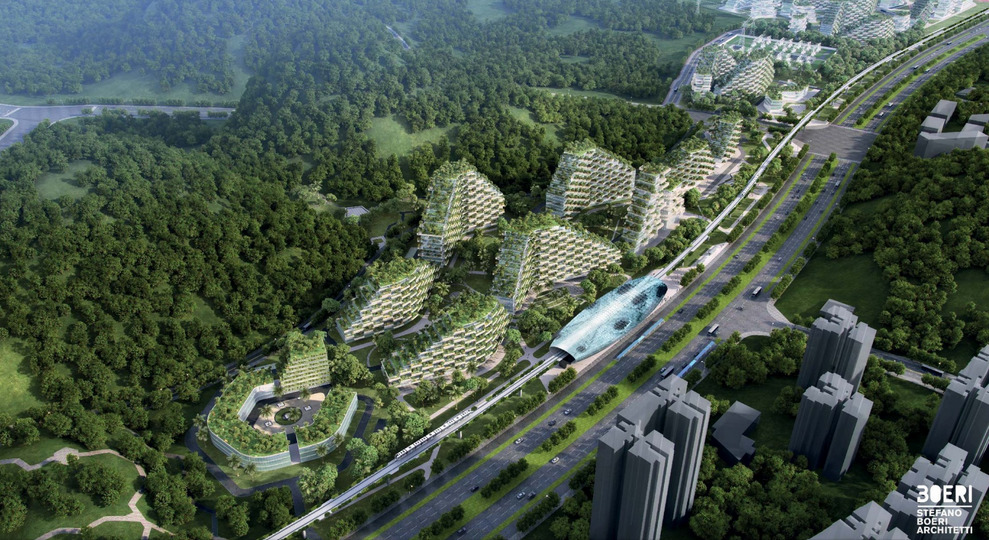
According to the architecture firm: “The diffusion of plants, not only in the parks and gardens or along the streets, but also over building facades, will allow the energy self-sufficient city to contribute to improve the air quality (absorbing both CO2 and fine dust of 57 tons per year), to decrease the average air temperature, to create noise barriers and to improve the biodiversity of living species, generating the habitat for birds, insects and small animals that inhabit the Liuzhou territory,”

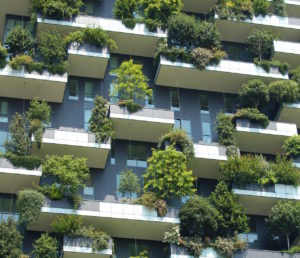
The idea to control air quality through architecture is not new. For decades, urban planners have worked and invested in bicycle paths, innovative transportation programmes, and looked into how to improve the cities’ walkability. All features with the objective of reducing emissions from cars and transportation. However, the role of the physical buildings themselves in improving air quality is picking up with many novel ideas in the past decades.
A few interesting and encouraging examples out there include 1. Mexico City, the Manuel Gea Gonzalez Hospital has an external structure that is coated with titanium dioxide. This coating -Provolste360e- helps break down pollutants when exposed to light by releasing free-radicals. Tiles coated with this substance can be used on any surface in the city and repurpose old façades. 2. Paris where the Musee Quay Branly with its living wall that absorbs carbon dioxide and emits oxygen. Yet another example is the Congress Gateway Towers in Chicago, which have an air filtration system to absorb CO2, which then feeds growing algae and is processed into biofuels to provide clean energy for the building.
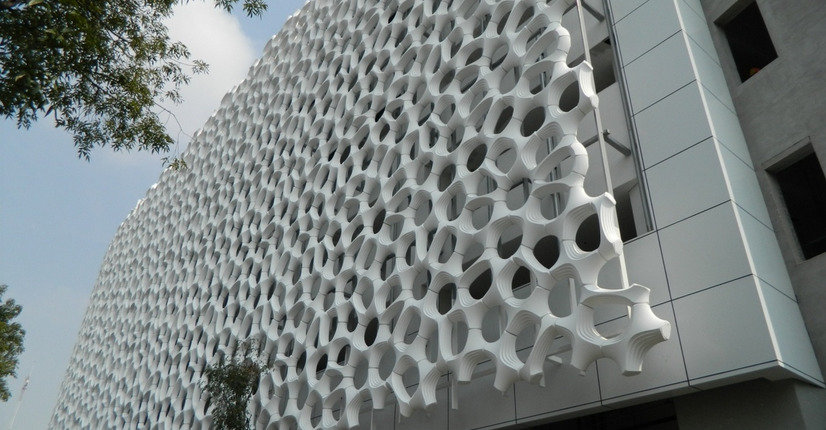

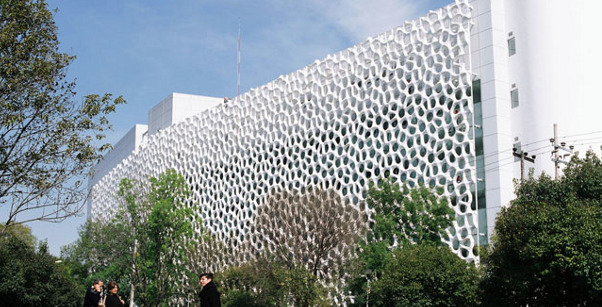
There are also some smaller initiatives as standalone solutions: the Dan Rosengaarde Smog Free Tower, a smog sucking vacuum tower already installed in Beijing; and CityTree, the ultra tech green wall that can be displayed as urban furniture to help control air pollution.
Architecture has a lot to offer to control air quality, and ideas are sprouting in many directions.
They key to their use on a larger scale is to show their effectiveness by monitoring how air quality is improved following these various initiatives.
MONITOR, ACT AND TAKE CONTROL OF THE AIR QUALITY THAT MATTERS TO YOU!
When global problems affect your local air
In our day-to-day life we have all noticed that the morning after heavy rain it’s usually a clear and fresh morning with low levels of airborne pollution. Wind conditions usually blow pollution out of the cities and those peaks of harmful air are mostly in days with no air flow or precipitation. Empirically we have experienced the fact that weather patterns have an effect on dissipating air pollution or not.
This past week, researchers from the Atmospheric Sciences, Georgia Institute of Technology –Atlanta, published a paper in Science Advances on the effects of arctic meltdown on air pollution in China. The research clearly shows the challenges faced by China to address its air quality problems. Until now, most critics have focused on the need for China to control its emissions and to strike a healthier balance between development and environment degradation. Authorities in China have an increasing interest in controlling air quality, have implemented emission caps and most importantly are now the country with the largest production of clean energy. However, air quality is far from improved and pollution has not decreased as was hoped. The relevance of this research is that it affirms, following weather modelling analysis, that in the Eastern Plains of China, emissions’ control is important but is not enough to improve air quality. In fact, major global climate change problems are playing a significant role in promoting the accumulation of air pollution in this region.
“The ventilation is getting worse,” said study author Yuhang Wang, an atmospheric scientist at Georgia Institute of Technology in Atlanta to The Guardian “We think climate change, as it is driving rapid warming of the Arctic, is having a large effect on pollution in China.” “The very rapid change in polar warming is really having a large impact on China, emissions in China have been decreasing over the last four years, but the severe winter haze is not getting better. Mostly that’s because of a very rapid change in the high polar regions where sea ice is melting and snowfall is increasing,” he said. “This keeps cold air from getting into the eastern parts of China, where it would flush out air pollution.”
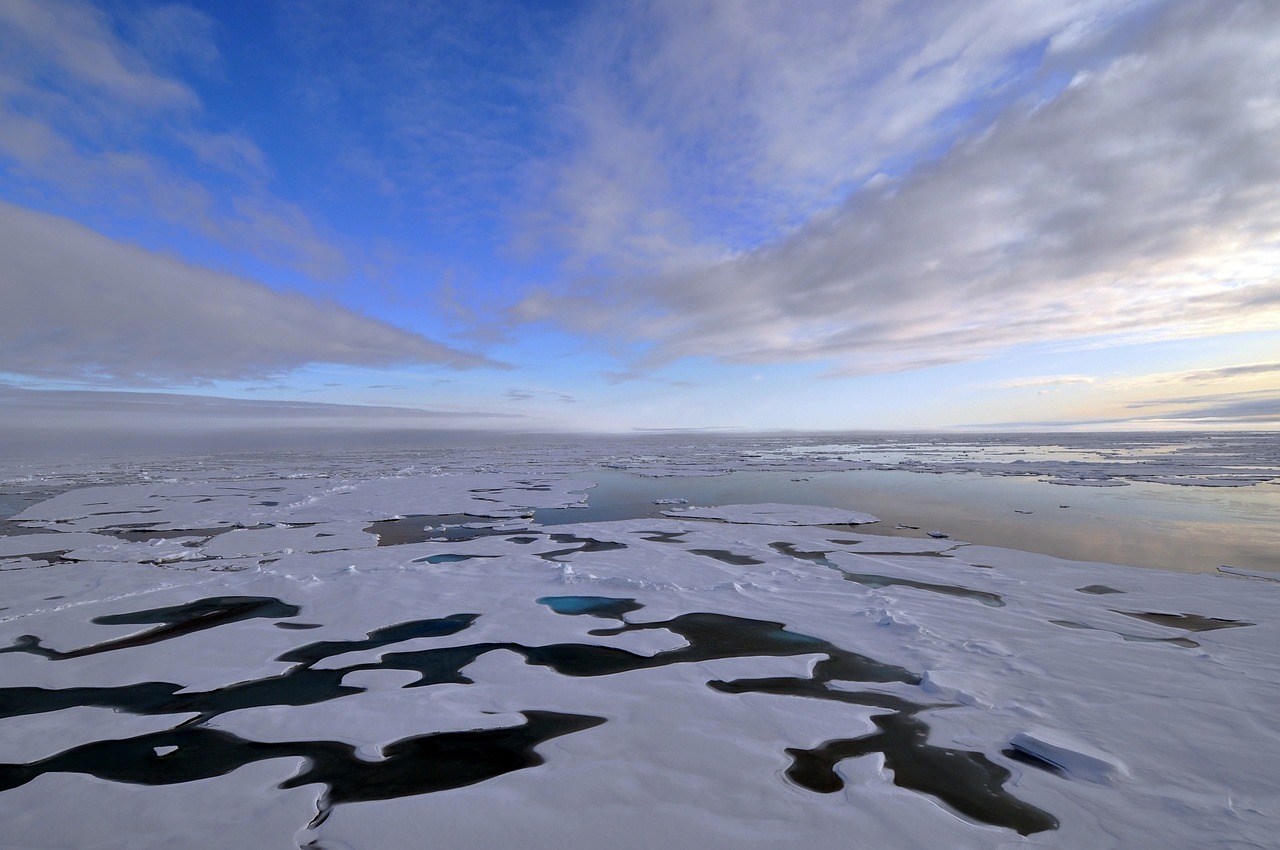
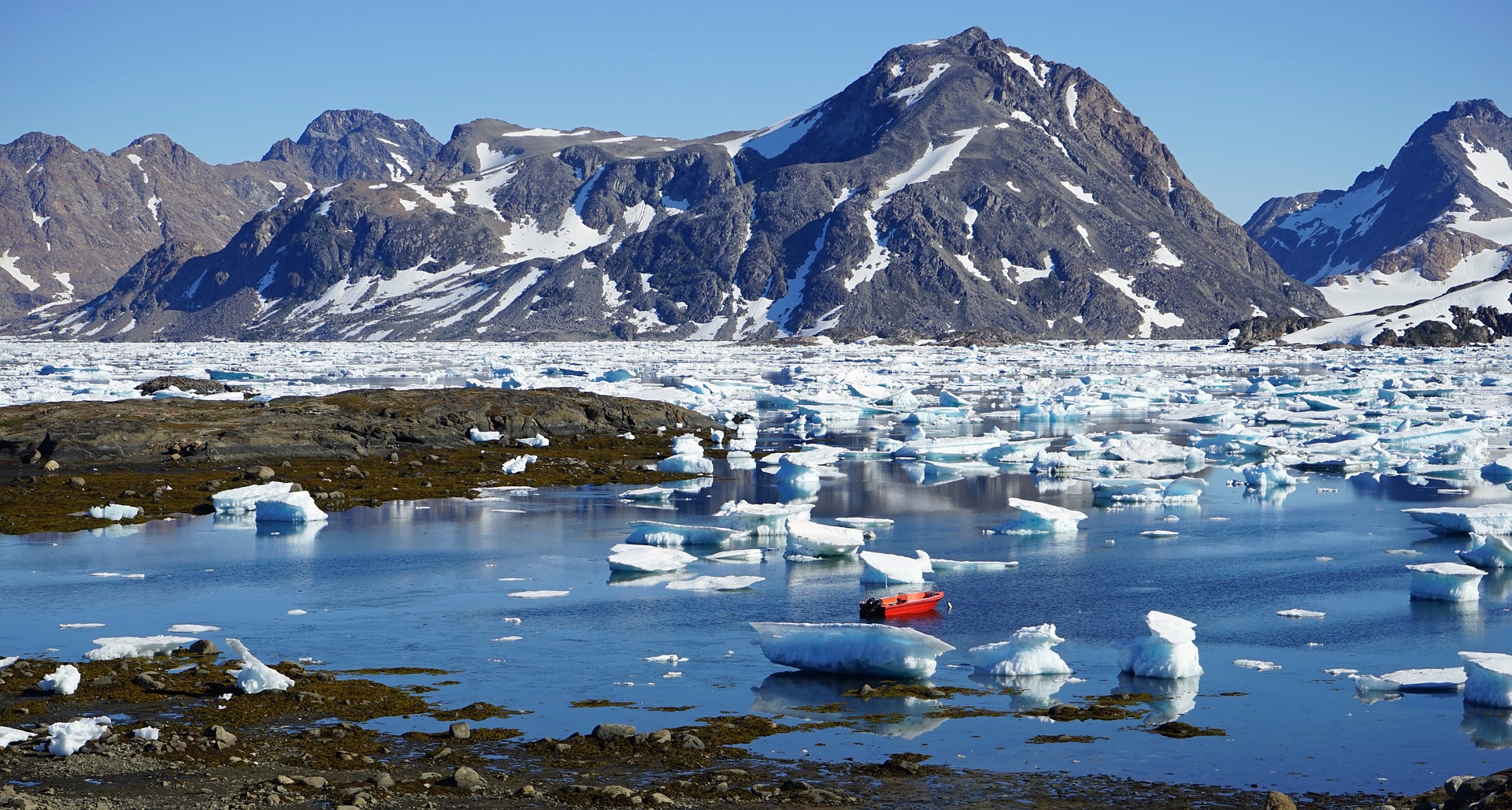
This is a scientific example of how weather conditions affect the build-up of air pollution in a certain place. This helps us further connect the dots between the bad air quality that harms our health and global problems such as green-house gas emissions, climate change and melting of the Arctic sea ice.Emissions of greenhouse gases from human activity cause between half to two-thirds of the fall in summer ice. Scientists predict that if the Arctic sea ice melting continues along with a correspondent increase in Eurasian snowfall, extremely poor ventilation conditions will occur and air quality control will prove increasingly challenging to implement unless greenhouse gas emissions are reduced not only in China but globally. The National Snow and Ice Data Center (NSIDC) reported in February 2017 that: “Antarctic sea ice is nearing its annual minimum extent and continues to track at record low levels for this time of year. On February 13, Antarctic sea ice extent dropped to 2.29 million square kilometers (884,000 square miles), setting a record lowest extent in the satellite era.”
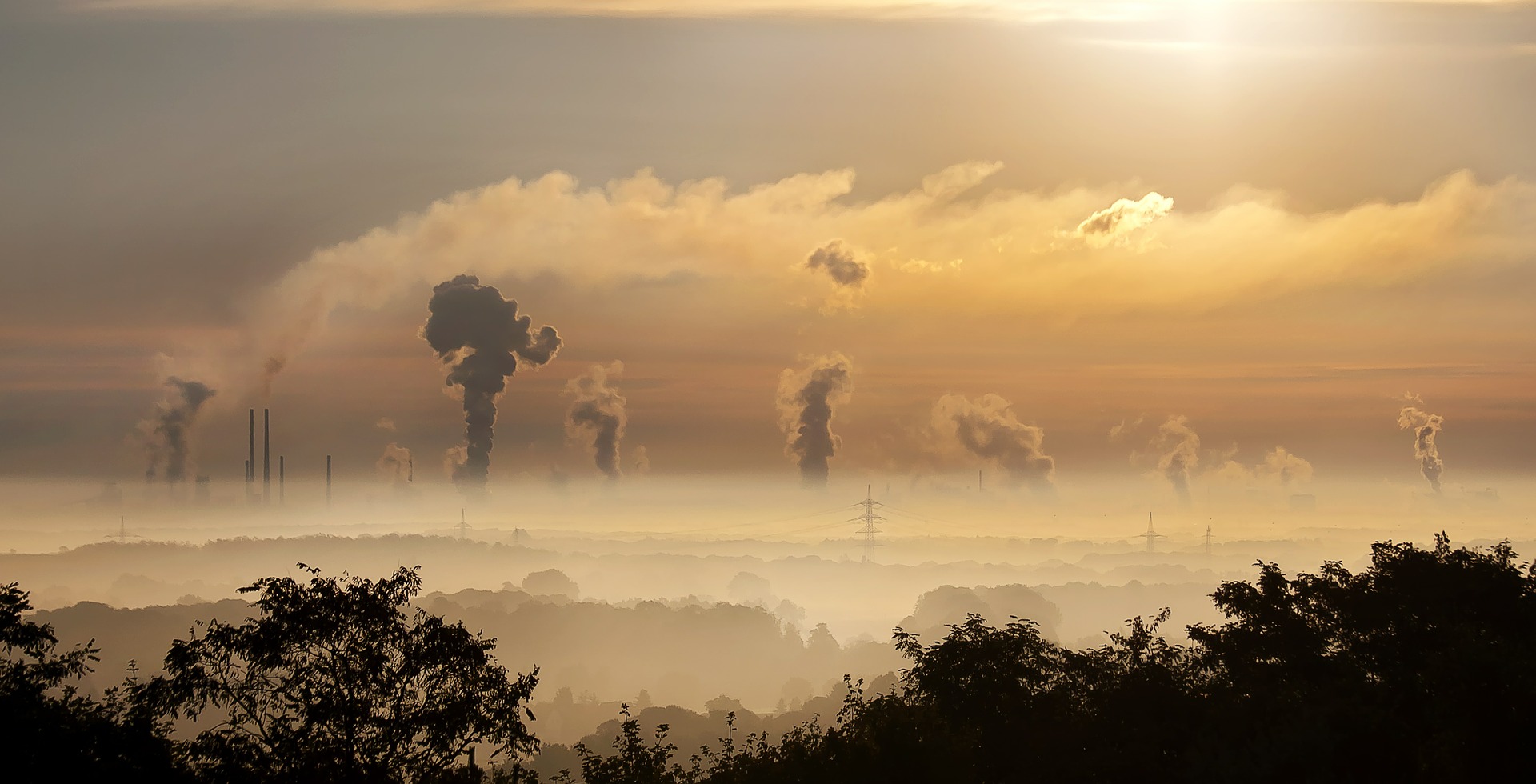
Air pollution affects us ALL and is one more environmental problem that is made worse by climate change!
Sources:
The Guardian – ‘Airpocalypse’ smog events in China linked to melting ice cap, research reveals
Science advances – Arctic sea ice, Eurasia snow, and extreme winter haze in China
Science – Why is China’s smog so bad? Researchers point far away to a melting Arctic
Economic growth vs. Environmental policies?
This week we have a thought provoking discussion: environmental policy vs. economic growth. This has been at the heart of decisions in the last year with regards to the Paris Agreement, for sure the excuse of many developing nations to delay adoption of environmental policies. In fact, we are constantly debating about the apparent conflict between economic development and environmental protection policies.

The last 50 years have seen rapid urbanization process in many countries, with cities offering more economic opportunities and rural areas being left for the environmentalists and hard labour. Cities grow, innovation happens and with that pollution levels rise, car convenience increases emissions, electricity needs increased emissions and consumerism increases emissions even further. In this picture, cities as centers for growth and innovation should be discouraged if we want to control air pollution.
Researchers at Carnegie Mellon published a research on the link between economic development, urbanization and pollution.
Interestingly enough, the research found that urbanization is the result of a higher quality of life, and cities are more efficient at delivering services such as electricity. The study found that cities have more pollution but pollution per capita is lower in cities than out of them, and environmental policy does mitigate how emissions increase when the population of a city increases. The study in US counties showed that metropolitan GDP and personal income scaled with population size and this was regardless of environmental policies. So, environmental policies did not have a negative effect in economic development in cities, they in fact reduced drastically the environmental damage and pushed for cleaner production practices hence fueling green innovation.
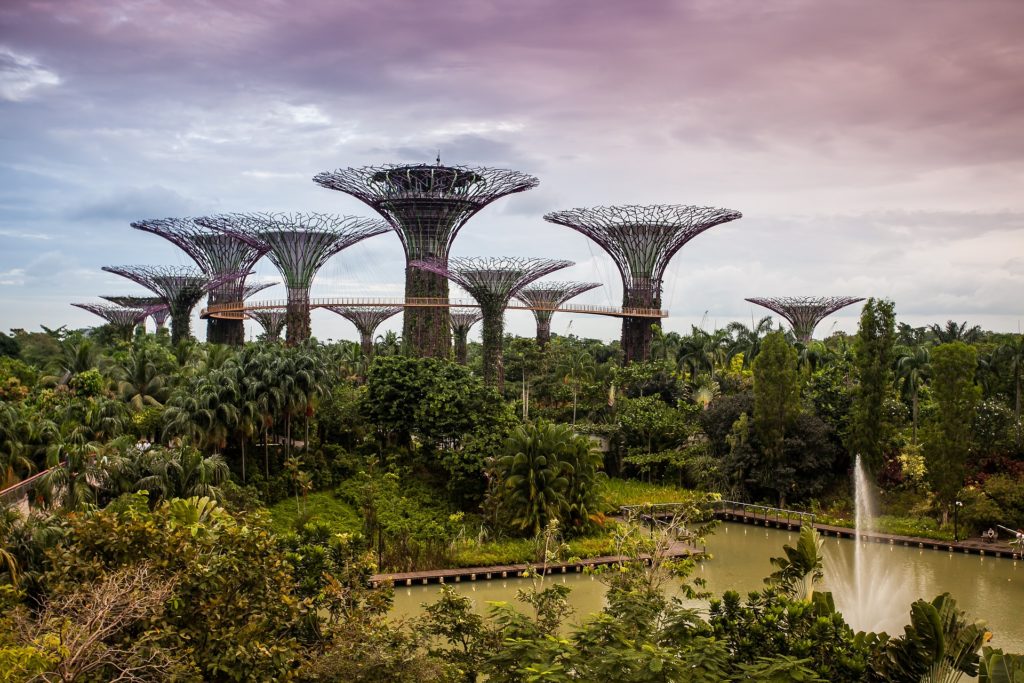
Environmental protection can only make things better for all! Let’s take action and push innovation to cleaner ways of achieving economic growth!
Monitor air quality, Act to breathe cleaner, Enjoy the benefits!
Strokes and What We Breathe
When we think about the health effects of air pollution, our immediate thought goes to our lungs. But the silent threat of poor air quality reaches many unexpected areas of our body. In the past two decades, research has shown that strokes, heart attacks and irregular heart rhythms can result from exposure to air pollution especially among people at risk. Currently, nearly 15 million people suffer a stroke worldwide, out of which 6 million die and 5 million are left with disabilities, possibly severe. The latest study suggests that approximately 29.2% of global strokes are linked to air pollution and the strongest link (33.7%) was seen in developing countries were solid fuels are burned indoors for energy. In developed countries, the link is much weaker at 10.2%.
“A striking finding of our study is the unexpectedly high proportion of stroke burden attributable to environmental air pollution, especially in developing countries. Air pollution is not just a problem in big cities, but is also a global problem. With the ceaseless air streams across oceans and continents, what happens in Beijing matters in Berlin. Air pollution is one aspect of the fossil fuel and global warming problem, which is itself partly a result of westernisation and urbanisation, especially in India and China.” Professor Vladimir Hachinski, University of Western Ontario, London, Canada and Dr Mahmoud Reza Azarpazhooh, Mashhad University of Medical Sciences, Mashhad, Iran.

Asia is responsible for two-thirds of the global stroke mortality. The local situation is characterised by two distinct yet opposite trends 1. mortality following a stroke has been declining in North Asia (Korea, Japan, Taiwan and urban China) perhaps due to improved stroke care, albeit the occurrence (incidence) of stroke is apparently not declining, thus leaving a greater number of people with long-term care needs, and 2. southern Asia (India, Pakistan, Bangladesh, Indonesia) where life expectancy is increasing but risk factors such as hypertension, diabetes, obesity, cigarette smoking are not yet adequately addressed. Given that cardio-vascular diseases are particularly affected by small particles found in haze, smoke and dust and the high link found between strokes and pollution, air pollution may be playing a major role in stroke statistics in Asia.
Effects of air pollution in cardiovascular diseases and strokes may be immediate or long-term. Immediate effects happen in older persons and sensitive persons with the build-up of fatty deposits in the arteries, where accumulation of small particles may worsen the situation.[7] Long-term exposure to poor air quality may, according to research, facilitate and worsen atherosclerosis (hardening and narrowing of the arteries) a disease commonly associated with high blood pressure and heart attacks / strokes.
In conclusion, if you are a person at risk of cardiovascular diseases or not “The central theme here is to be careful,” said Dr Luepker from the American Heart Association and “Avoid situations where you are exposed to a high level of air pollution.”
Circulation – Air pollution, Climate and Heart Disease
Science Daily – For the first time, air pollution emerges as a leading risk factor for stroke worldwide
BMJ – Stroke in Asia: geographical variations and temporal trends
NIH – Stroke in Asia: a global disaster
Common Tips To Protect Yourself From Air Pollution

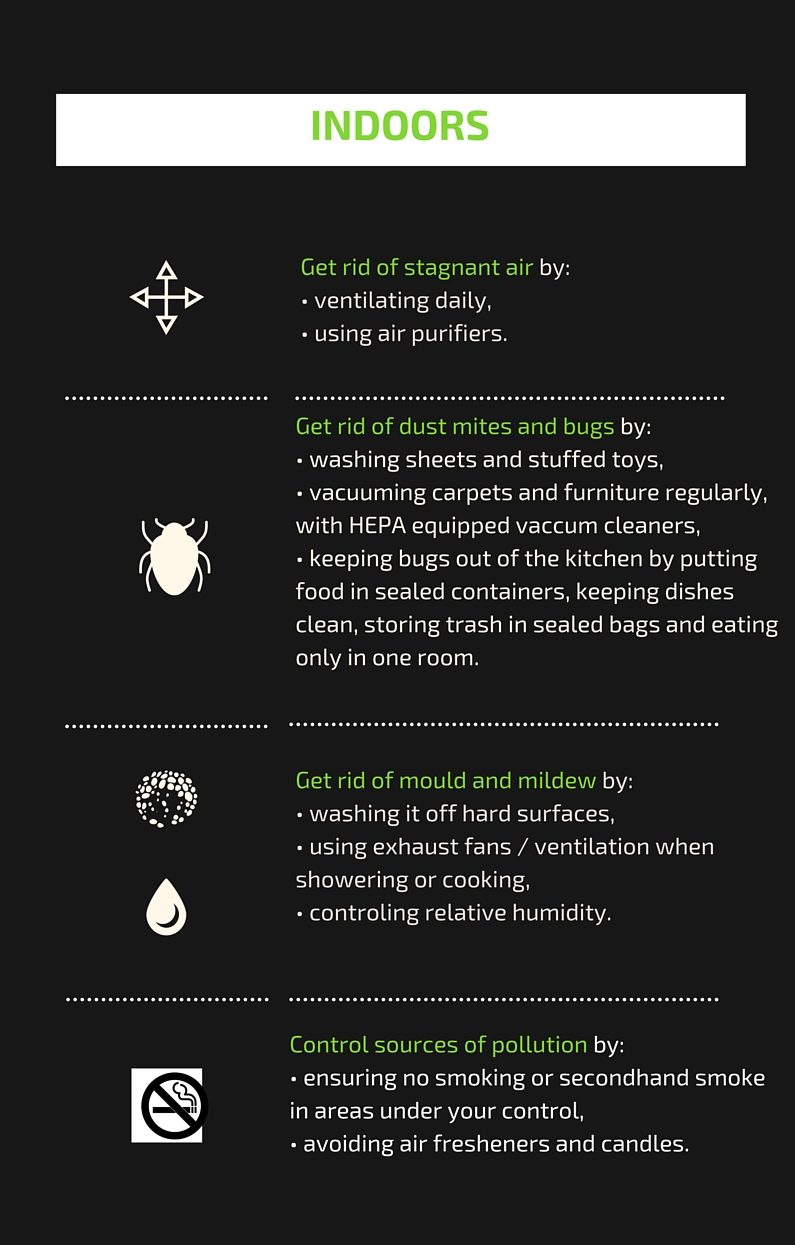
Air Pollution and Diabetes
The International Diabetes Federation says diabetes mellitus (common diabetes) affects around 400 million people across the world. Research in the past 10 years has shown that environmental irritants in the air and water play a role in these figures. A number of studies have now shown that air pollution has a synergy with other dominant factors and accelerates the propensity for type 2 diabetes, also known as adult-onset diabetes.
At The Duke University rats were exposed to air with highly polluted air (similar to Beijing readings) or filtered air for 19 days. The group of rats exposed to the Beijing air had 50% higher cholesterol level, 46% higher triglycerides and 97% higher total cholesterol.
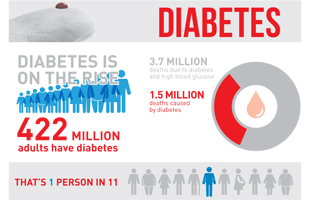

What is happening in Asia?
Yes! Many studies have been conducted analysing this relation in humans. A study by the German Center for Diabetes Research (DZD) and the Helmholtz Zentrum München showed how air pollution at the place of residence increases the risk of developing pre-diabetic insulin resistance.
“Whether the disease becomes manifest and when this occurs is not only due to lifestyle or genetic factors, but also due to traffic-related air pollution,” said Professor Annette Peters, director of the Institute of Epidemiology II at Helmholtz Zentrum München and head of the research area of epidemiology of the DZD.
“The results revealed that people who already have an impaired glucose metabolism, so-called pre-diabetic individuals, are particularly vulnerable to the effects of air pollution,” said Dr. Kathrin Wolf, lead author of the study. “Thus, over the long term — especially for people with impaired glucose metabolism — air pollution is a risk factor for type 2 diabetes.”
Researchers from King Saudi University, Saudi Arabia, further acknowledged that traffic associated pollutants, NO2 (nitrogen dioxide), tobacco smoke and particulate matter have the strongest link with diabetes. And researchers from Naples University in Italy quantified the risk of future diabetes between 10 and 27% associated with exposure to just a 10 μg/m3 increase of PM2.5. In the most recent research, a US study looked at 1000 Mexican-Americans and found that PM2.5 exposure was significantly associated with diabetes risk factors, with an effect equivalent to that of obesity, the authors noted.
What is happening in Asia?
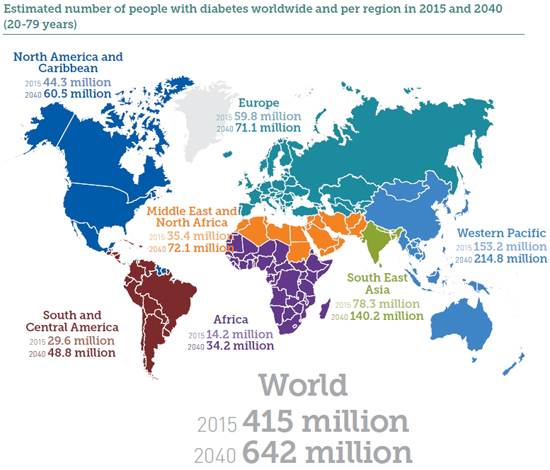
Asia is affected by the double burden of high levels of air pollution and a high percentage of the population with diabetes. In fact, Asian countries have 60% of the world’s diabetic population. China alone is leading this statistic with 10% of its population (98 million) affected by diabetes. This is the result of a combination of factors: socio-economic growth and industrialization; urbanization spreading widely and notable lifestyle changes. Moreover, Asians have genetically a higher predisposition for diabetes, they develop diabetes earlier and with lower body mass index and waist circumference when compared with the Western population. Prof Juliana Chan of the Chinese University of Hong Kong says there is a complex interplay between genetic, lifestyle and environmental factors, which have been compounded by China’s rapid modernisation. Worryingly, if we combine the higher predisposition to diabetes, the nearly 50% smoking rate among adult men, the change of diet due to globalization and the very high air pollution levels, we can understand the extent of the risk in Asia.
What can we do about it?
Reduce the effect of air pollutants on your diabetes risk:
- Avoid smoking or passive smoking;
- Know your indoor air quality and control it;
- Protect yourself when exposed to outdoor air, especially when its highly polluted;
- Adopt a healthy diet; and
- Increase your level of physical activity.
Sources:
Diabetes Journal – Air Pollution and Type 2 Diabetes
Science Daily – Air pollution, a risk factor for diabetes
NIH -Effect of environmental air pollution on type 2 diabetes mellitus
NIH – Particulate matter pollutants and risk of type 2 diabetes: a time for concern?
REUTERS – Air pollution not just bad for your lungs
TIME – Study: Air Pollution Heightens Risk of Obesity and Diabetes
Better Air Quality is the Smart City Challenge
Cities across the globe are facing increasing levels of air pollution. Particles so small that we cannot see and gases at ground level, penetrate our bodies affecting us in many ways: cardiovascular diseases, chronic respiratory illnesses, strokes, heart attacks, asthma and many more are all common effects of air pollution.
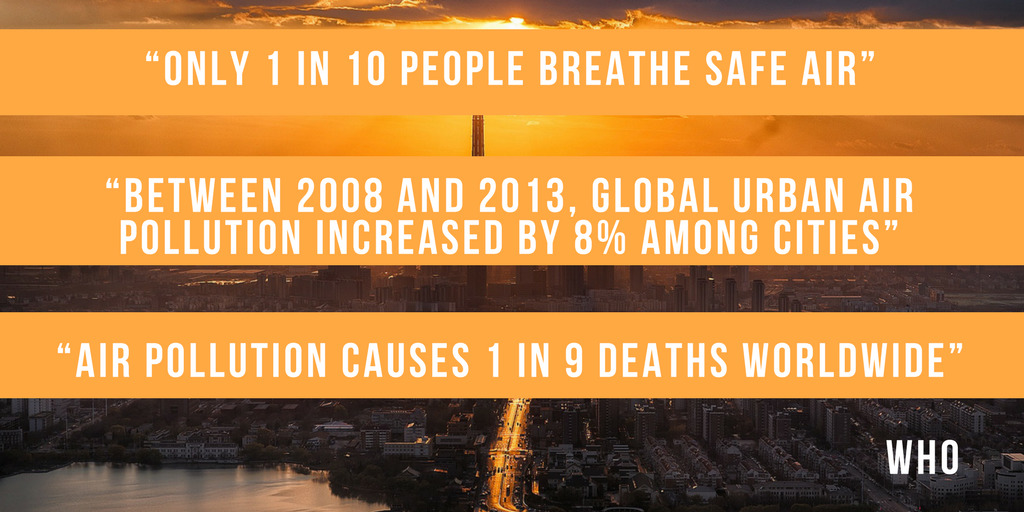
What can cities do?
WHO’s initiative ‘Breathe Life 2030’ calls for cities to take action in the following areas to reduce air pollution:
- TRANSPORT: does your city have a solid transport system? Are car emissions controlled? Think about…
- Walking and Cycling paths
- Efficient mass transport
- Controlled emission standards
- Soot-free vehicles
Cities that transform into pedestrian & cycle-friendly and with efficient mass transit systems and controlled emissions generate less pollution and are more liveable.
- ENERGY SUPPLY: Cities are big energy consumers, striving for cleaner energy production is key. Think about…
- Renewable power supply
- Diesel replacement
Cleaner energy production will impact positively the air quality in that given city.
- WASTE: proper landfill management can decrease the emission of gases.
- INDUSTRY: industries in and around cities should be strictly controlled for their emissions.
- AGRICULTURE: agricultural areas around cities should be careful with irrigation, reduce open burning and manure management to control emission of gases and particulate matter affecting nearby cities.
- HOUSEHOLD: households should be helped to make sure they use low-emission stoves and fuels, improved lighting and passive building design.
However, the first step is always to understand local air pollution, how does it build up in a city, when and how does it clear up. Each city has different patterns of producing air pollution and different natural ways of dispersing it. Understanding how this interaction happens is essential for any city to take steps to improve air quality.
Monitor, monitor, monitor!
Nowadays cities have a handful of high-end air quality monitoring stations that provide a broad view of air quality in any given city. This information may also be compared or complemented with satellite images. But both options provide general information. In real time, most cities cannot precisely say the pollution levels at block level or intersection level. This is a limitation to understanding local air pollution and to taking precise local measures to improve air quality or to measuring the effectiveness of any given measure.

